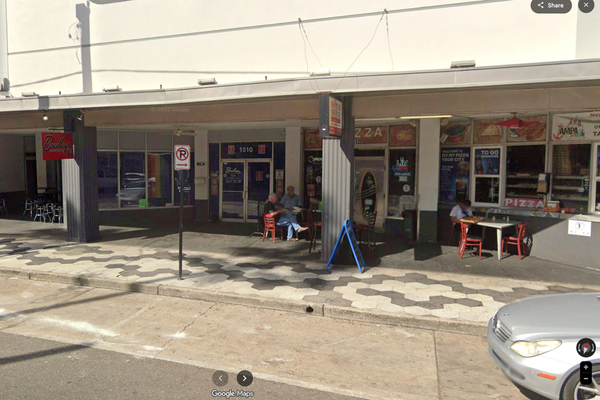EARLIER this month, the Edinburgh Festival Fringe Society – the organisation that coordinates the world’s biggest arts programme – concluded a two-week “mass listening project” for the arts industry. Described as the Society’s “biggest feedback drive in years”, the online consultation sought the views of artists, venues, producers and Fringe workers on the issues facing the massive arts showcase.
A separate online consultation for members of the Fringe audience is open until October 23. The results of both consultations are set to be published early next year.
The consultation process was promoted by the Fringe as a positive contribution to its 75th anniversary year. However, some perceived it as a rearguard response by an embattled organisation.
In recent years and decades, the Fringe has come in for criticism on a number of fronts. From the treatment of the army of casual staff who work at the festival, to issues over the Fringe Society’s ticketing and the spiralling cost of accommodation in Edinburgh, the organisation has been beset by detractors.
This year, for example, the Fringe Society was the subject of an open letter from the Live Comedy Association (LCA) – which was signed by 1600 people, including prominent comedians such as Joe Lycett and Jo Caulfield – that criticised its alleged lack of support to the comedy industry in the run-up to the 2022 festival. The letter – which was released in July – took a swipe at the Fringe for, among other things, scrapping its ticketing app.
The Fringe argued that the app was used by only 7% of Fringe-goers, and needed a revamp that it cannot currently afford.
Ticketing is a sensitive subject for the Fringe. In 2008, the near collapse of its electronic ticketing system led to chaos and widespread consternation among audiences, artists and promoters.
Other gripes from the LCA included a lack of support from the Fringe over sky-high accommodation costs in Edinburgh in August. Whether the criticisms brought forward by the LCA were fair or not, they reflected a growing sense of frustration with the experience of the Fringe.
The Edinburgh housing crisis
There is considerable anxiety among artists, producers and sections of the audience that, as the Fringe has grown, it has lost some of its original, art-centred ethos and become less economically sustainable for artists themselves. Notably, in its industry consultation the Fringe Society placed accommodation costs at the top of the list of concerns.
Meg Bishop, spokesperson for Living Rent – the pressure group representing low and middle-income renters – believes that the eye-watering rents that visitors face in Edinburgh in August are a symptom of a wider problem.
“What we have seen in recent years,” she explains, “is landlords converting what were private rented tenancies into holiday lets.”
According to Living Rent, almost one third of all residential accommodation in Edinburgh Old Town is currently rented out as holiday lets. It’s a figure that is as worrying as it is astonishing.
Landlords “know they can make an absolute fortune during the Fringe”, says Bishop. “The Fringe shines a light on a much bigger, broader problem.” The changes in the barely regulated private rental sector in Edinburgh have led, she adds, to a 63% increase in rents over the last decade.
Bishop notes that Edinburgh City Council is making some efforts to regulate the holiday lets sector, but “what it’s not doing is bringing down the number of holiday lets.” Figures indicate that approximately half of all holiday lets in Scotland are located in Edinburgh.
It is little wonder, then, that short-term holiday letting in Edinburgh is having such a huge impact on the private rented accommodation sector – not only during the festival month of August, but all year round.
Another factor impacting on the cost of private rented accommodation in Edinburgh is the growth in the city’s student population. Census figures show that the number of full-time students aged between 16 and 74 living in Edinburgh rose from 41,249 in 2001 to 57,495 in 2011 – an increase of 39.4%.
In the four years between the 2017-18 intake and 2021-22, the University of Edinburgh’s student numbers rose from 41,312 to 49,065 – an increase of 18.77%. Living Rent, which represents the interests of student renters as part of the wider renting population, does not consider the new private rented student accommodation blocks that have sprouted up across Edinburgh (as they have in university towns and cities across the UK) to be a solution to the student housing issue.
Bishop points out that not only do such blocks offer an expensive, often insufficient alternative to rented flats, but also that the numbers they cater for are considerably lower than the increase in the student population. In other words, increased student numbers in Edinburgh, coupled with the massive growth in holiday letting and the lack of new housing provision, makes the private rented sector in the city an ever more conducive environment for profiteering landlords.
The answer to this problem, says Bishop, “is not more purpose-built student accommodation, which is completely unaffordable [to most students]”. Instead, she adds, the solution lies in: “more social housing and better regulation on the holiday lets market.”

Guy Masterson – one the best-known theatre performers and producers on the Fringe over the last three decades – agrees with Living Rent’s assessment.
“Airbnb is one of the biggest disasters that’s hit the Fringe,” he says.
“Personally, I believe that people should be able to put their rents up during the Fringe, but there needs to be a regulation on that,” he adds.
That regulation should include, Masterson suggests, a stipulation by the city council that landlords cannot increase their letting fees in August by more than 100% of their monthly rents throughout the rest of the year.
The need for tougher regulations
THE fact that such a modest proposal will seem radical to many Edinburgh landlords is, surely, indicative of just how unregulated the private lettings sector is at present. Any public consultation that might be initiated by such organisations as the Fringe Society and the city council would have to involve the University of Edinburgh, which is a massive landlord with a very significant portfolio of residential properties, and is a major beneficiary of the summer lettings market.
For Masterson, the urgent and massive issue of accommodation is emblematic of a wider “corporatisation” of the Fringe. The increasing influence of market forces has led to a beanfeast for many landlords and businesses, while placing artists and producers under ever greater financial pressure.
Artists and producers create an “Olympic-sized event” in Edinburgh every August, says the actor, yet a great many – if not most – consider themselves lucky if they break even on the Fringe.
“We’ve forgotten what the fundamental values of the Fringe are,” Masterson adds. “We’re in a perfect storm of exploitation that’s now hitting the artists.”
The actor – whose many acclaimed one-man shows on the Fringe include Animal Farm, Under Milk Wood (above) and Shylock – is not surprised by the money-making that goes on during the festival.
“Of course people are going to exploit the Fringe,” he says. “If you’ve got the biggest arts extravaganza on the planet happening in one of the greatest cities on the planet – because it happens to be the perfect city for such an extravaganza – there are going to be people who say ‘let’s exploit it’.”
He gives as an example Out Of Hand, the poster company that holds the contract for putting up (and taking down) the large posters for Fringe shows that we see on the many sites designated by Edinburgh City Council every August.
The company has, the actor says, a very lucrative monopoly by dint of its contract with the council.
“We [producers of Fringe shows] have to buy posters from Out Of Hand,” he explains. “It’s extortionately expensive, and if we don’t buy posters from them, we don’t get the publicity that is necessary to sell our shows.”
Masterson has been around the Fringe too long to be naive about such matters. He understands the council’s reasoning for the contract with Out Of Hand. However, he sees the transaction as yet another example of a Fringe economy that puts artists and producers last.
If you are a right-wing hyper-monetarist, there is nothing wrong with this set-up. In the cultural free market, businesses should be able to exploit the opportunities provided by the world’s biggest arts festival. If, in artistic terms, the Fringe becomes a dog-eat-dog competition in which there are hundreds of impoverished artists for every Jimmy Carr, so be it.
For the rest of us, however, there is, surely, something deeply worrying about both the economic and cultural implications of the burgeoning corporatisation of the Fringe. As market forces have increased their influence over the festival, an ever larger proportion of the Fringe’s output has come under the umbrella of big venue companies such as Assembly, Pleasance, Gilded Balloon and Underbelly.
While these companies are involved in selecting the acts that they stage, their programmes could not be described as entirely curated, in the way that the Edinburgh International Festival, for example, is selected on grounds of perceived artistic quality. The curated Fringe programme of the Traverse Theatre is only possible because the venue has stable, year-round financial support from Creative Scotland and Edinburgh City Council.
Other curated programmes have come and gone, not due to a lack of artistic success, but because they simply could not survive in the economic climate of the Fringe. I often cite the example of Aurora Nova, the extraordinary Fringe showcase of international visual theatre that was staged at St Stephen’s Church in the New Town between 2001 and 2007.
Hugely popular with audiences and built on egalitarian principles (in terms of trying to share both financial risk and any profit among the artists and producers), it ultimately collapsed under the pressure of market forces. The loss of Aurora Nova meant that brilliant theatre companies – such as Derevo from Russia and Farm In The Cave from the Czech Republic – either stopped coming to the Fringe or had to subsume their work within the much more eclectic Fringe programmes of the big venues. Either way, the result was the artistic diminution of the Fringe.
IF this marketisation of Edinburgh’s great art showcase is to be arrested, let alone reversed, serious regulation of the market in holiday lettings has to be implemented and soon. More than that, however, a root-and-branch consideration of the entire Fringe economy needs to be undertaken to take account of the fact that, without artists, there is no Fringe.
Given the kind of profits being generated by people and businesses who deliver nothing to the Fringe in artistic terms, the very least that artists should be able to expect is a fund that protects them against losses. Any meaningful intervention in the Fringe economy must have as one of its primary objectives the securing of a larger share of the festival pie for the artists themselves.







